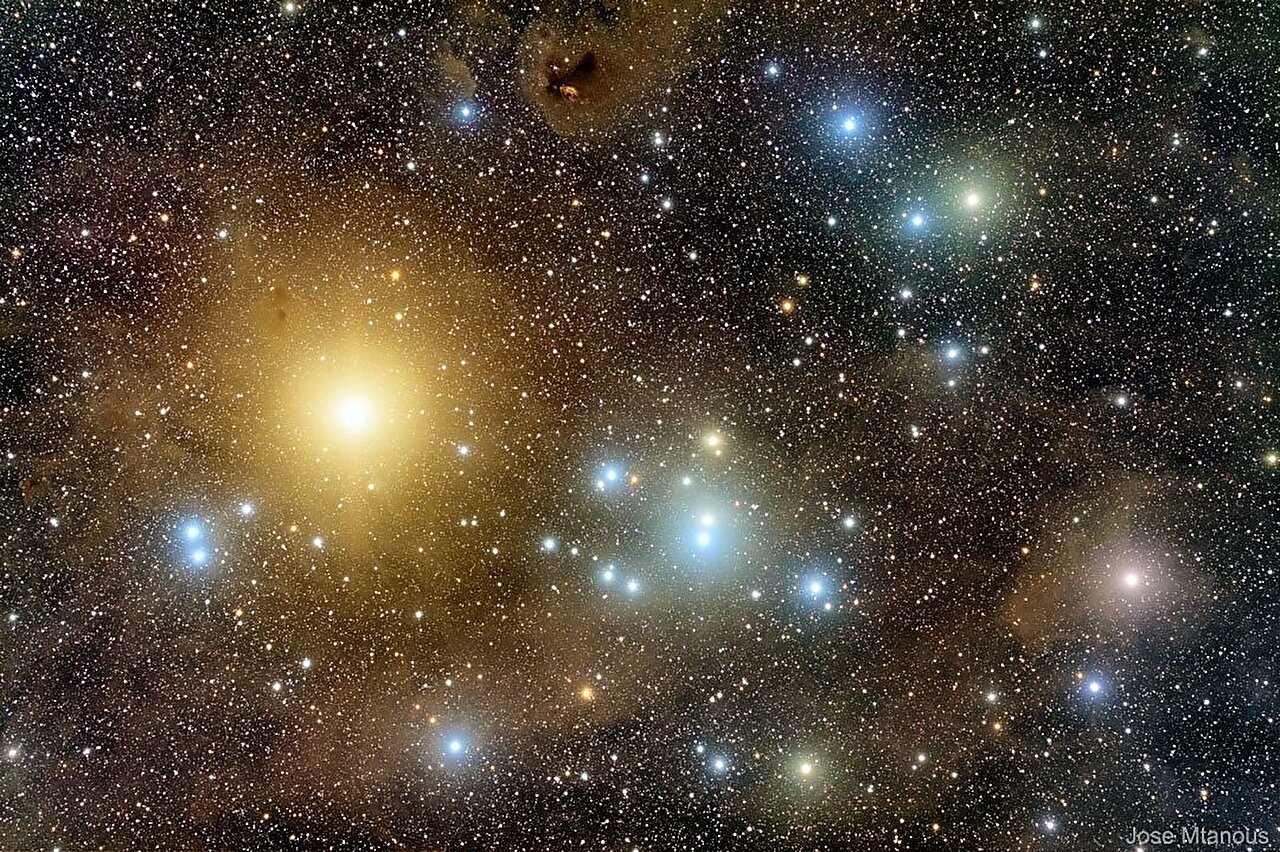The nearest black holes may be only 150 light-years away from us. This is evidenced by modeling the evolution of one of the closest scattered star clusters to the Solar System, Hyades.

Black Holes in Hyades
In the latest issue of the journal Monthly Notices of the Royal Astronomical Society, there was an article suggesting that there may be several holes in the scattered Hyades cluster. The authors of the study are scientists from Italy and Spain.
Hyades is the nearest scattered star cluster to us. In the sky, it can be seen in the constellation Taurus next to its brightest star Aldebaran. The distance to this group of stars is approximately 150 light-years. The luminaries that enter it are now rather weakly gravitationally interconnected, although they were all born together.
If there really are black holes in the Hyades, then they are the closest similar objects to us. After all, the previous candidate for this title, Gaia BH1, is located at a distance of 1,500 light-years, that is, about 10 times further.
Simulation results
The idea that black holes can hide in Hyades has been expressed even earlier. The simulation showed the possible presence of 2-3 of these objects there. Otherwise, this star cluster simply could not have acquired its modern form. However, calculations still left it possible that the remnants of supernovae were indeed there but were ejected about 150 million years ago.
Since 2015, scientists have repeatedly observed gravitational waves generated by the merger of black holes. Thanks to this, the scientist managed to understand much better the gravitational interaction of these objects with their surroundings. And this knowledge formed the basis of a new model, which showed that the mentioned 2-3 black holes were still there somewhere.
“This observation helps us understand how the presence of black holes affects the evolution of star clusters and how star clusters in turn contribute to gravitational wave sources,” says Mark Gieles, a member of the Department of Quantum Physics and Astrophysics at the University of Barcelona and one of the authors of the study. “These results also give us insight into how these mysterious objects are distributed across the galaxy.”
According to phys.org
Follow us on Twitter to get the most interesting space news in time
https://twitter.com/ust_magazine
